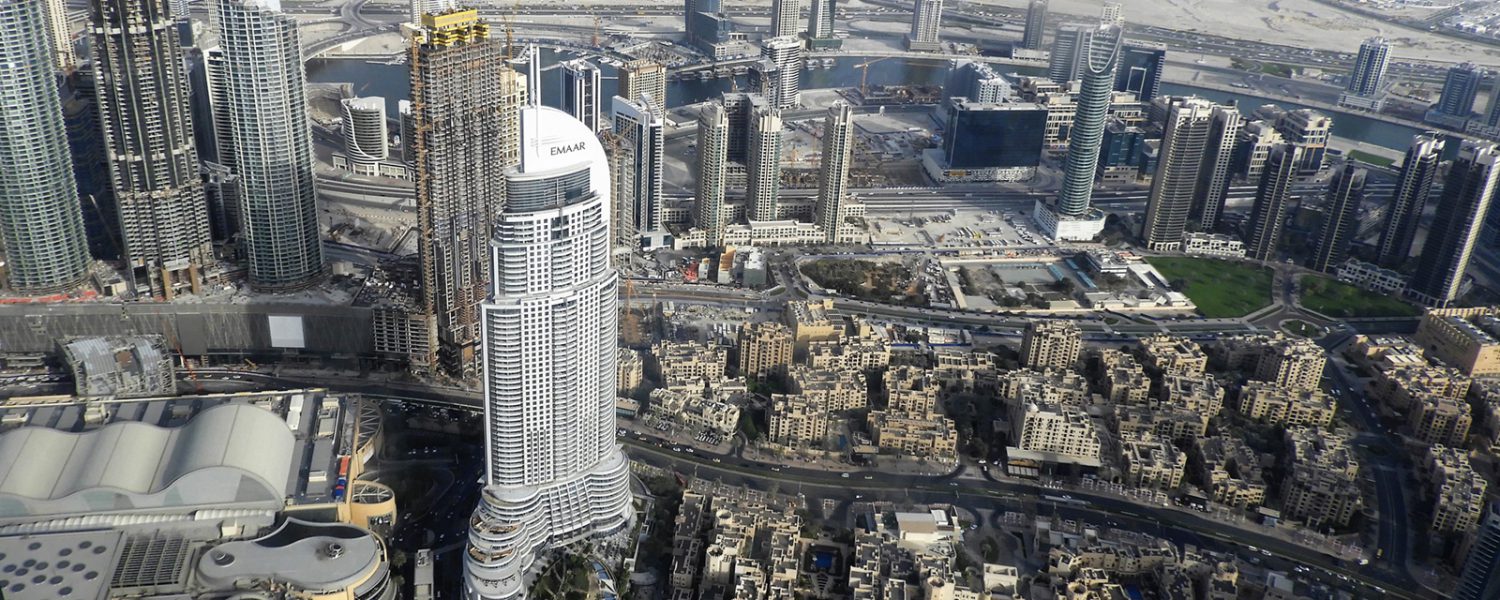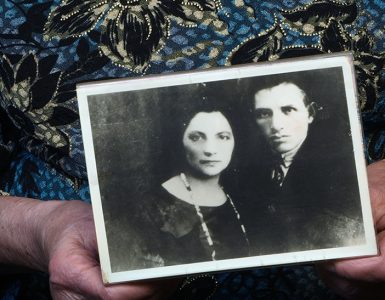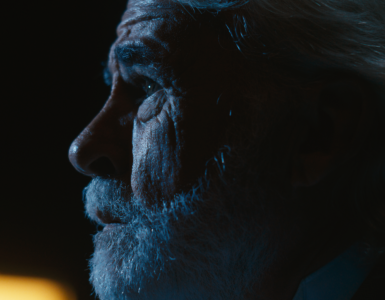Windsorites Go See for Themselves If the Hype is True
Story by Karen Paton-Evans
Photography by Pam and Bill Seney
With its futuristic skyscrapers casting a fantastical cityscape, Dubai, glimpsed through a shimmering sunset sinking into the Arabian Desert, makes a convincing mirage. The megacity on the Persian Gulf coast has come a long way from a little fishing and pearling village in the 1800s to one of the world’s fastest growing cities in this millennium.
“All the stories and pictures we’d seen about Dubai drew us there. We wanted to experience it for ourselves,” says Pam Seney.
She and her husband, Bill, and fellow Windsorites Maria and Roger Bramhall had spent a dozen days in ancient India and were eager to explore shiny Dubai over four days. On Tues., April 3 in 2018, they flew into Dubai International Airport, one of the busiest on the planet.
Feeling like they had landed in the Emerald City of Oz, the travellers were amazed. “Every building is completely different from the one beside it. They all have their own character: Oval. Boat shaped. One was two sticks with a bar across the top,” Roger notes.
Honouring Islamic design, Burj Khalifa rises above Dubai and indeed anything else built in the entire world. The globe’s tallest structure, standing at 829.8 metres, houses the Armani Hotel, corporate suites and offices, dining establishments, residential apartments and sky lobbies with swimming pools. The Canadians were impressed that Burj Khalifa, finished in 2009, beat out the previous record holder for the world’s highest restaurant at 442 metres: Those bragging rights used to be held by the CN Tower in Toronto with a height of 350 metres.

“Seeing the world’s tallest building was the big attraction in Dubai for me,” Bill says. “We went up and looked down on top of other skyscrapers. It’s a wonderful feat of engineering.”
“The modernization of the city is on a different level from anything I’ve experienced,” Maria says. “You go to other cities and there is a history. Much of Dubai’s architecture has been built in last 30 years, so everything is relatively new. You see cranes everywhere – Dubai is building continuously.””
To get a sense of the city’s roots, “We did a tour through Old Dubai – which isn’t that old. The streets and shops are more quaint and the buildings are smaller,” Pam says. Among the stores in the historical souk districts lining Dubai Creek is the Gold Souk, with approximately 250 gold retail shops.
Dubai’s wealth is evidenced by the large houses and shopping malls. “It seemed like the second car in everyone’s driveway was a high-end sports car,” Bill says. In tourist areas, the Dubai Police Force drives Ferraris, Porsches and other fast luxury vehicles.
“A lot of wealthy people from the United Arab Emirates, India, Europe, the U.S. and other countries are living and working in Dubai,” says Roger. On a private tour, “We saw what I thought was a cruise ship, but our driver told us it was a private yacht.”
To encourage oil sheiks, celebrities and visitors to spend some of their UAE dirhams, Dubai has become the shopping capital of the Middle East. Every year, it hosts the Dubai Shopping Festival, featuring retail shopping at 70-plus shopping centres, fireworks, concerts, raffles and competitions, with prizes of cash and cars.

Dubai Mall, the world’s largest and most-visited retail and entertainment destination, engages guests with an aircraft simulator, underwater zoo, haunted house and an Olympic-sized ice rink, which hosts recreational skaters and the Emirates Ice Hockey League Games. The Mall of the Emirates has an indoor ski and snow resort.
Families and the young at heart can play on a grand scale at Motiongate, Bollywood Parks, Legoland and other mega theme parks. At 72,000 metres, the Dubai Miracle Garden claims to be the world’s largest flower garden, with 45 million flowers thriving on reused waste water fed through drip irrigation. Mushrif Park blooms with numerous houses built to represent different architectural styles from other countries.
Once the sun goes down, Dubai’s legendary nightlife springs into action. “We could feel the city pulsing around us,” says Pam. The Canadians avoided the bars and discos, opting instead to stand in a mall courtyard to watch a light and water show set to music. “It was spectacular – very similar to the Bellagio’s dancing fountains in Las Vegas.”
“In fact, when you look out, Dubai is almost like a little Vegas. Beyond the city, there is just sand for as far as the eye can see,” Roger says.
Never missing an opportunity to capitalize, Dubai even turns the sand into a tourist attraction. The Seneys and Bramhalls signed on for a sand dune safari. “We drove 45 minutes out of town on a super highway through the Arabian Desert. We arrived at a little camp where they offer camel rides. Some people were also riding down the dunes on surf boards,” says Maria. Remembering nearly slipping off a camel in Egypt, she was content to settle for four-wheel driving over the sand dunes.
“Instead of dune buggies, we were in a fleet of Range Rovers, Lincolns and Jeeps. Our driver took us up, down and sideways over the dunes. It’s quite the ride – like an extended roller coaster for miles,” Bill recalls.
Driving back toward Dubai, the travellers spotted neighbourhoods with more modest homes. Roger explains, “Many of the imported workers can’t afford to live in the city centre, so they live on the outskirts. In terms of housing costs, I don’t know if there is any place more expensive than Dubai.”
“As a tourist, I think travel costs compare to being in Toronto,” Pam says.

The desert heat was certainly higher than home. In early April, “It was warm yet comfortable – around 100 degrees,” says heat-loving Bill. “The humidity wasn’t bad.”
People wishing to cool off in the outdoors head to Dubai’s shore along the Persian Gulf for swimming, kitesurfing, parasailing, flyboarding, seabreaching and other watersports. “The water is crystal clear and the beaches are clean,” Maria recalls.
Boat access to the Gulf and oil below the sands are what gave Dubai its foundation. From 1892 to 1968, Dubai and neighbouring Trucial States were a British protectorate, with the British government providing defence and foreign policy. In 1971, Dubai, Abu Dhabi, Sharjah, Ajman, Umm al-Quwain and Fujairah formed the United Arab Emirates. Ras al Khaimah joined a year later. A constitutional monarchy, Dubai has been ruled by the Al Maktoum family since 1833. Citizens vote to elect representatives to the Federal National Council of the UAE.
The discovery of oil changed the fortunes of UAE. After Dubai began exporting its oil in 1969, the ruling sheikh applied a portion of revenues toward improving citizens’ lives.
Today, oil and natural gas account for less than 5% of Dubai’s revenues. Real estate, construction, trade, entrepot and financial services are the leading contributors to the emirate’s economy.

Showcasing its achievements, Dubai is inviting the entire world to Expo 2020, scheduled Oct. 20, 2020 to April 10, 2021. Construction is underway on the 438-hectare main site, midway between Dubai and neighbouring emirate Abu Dhabi. New infrastructure for Expo 2020 encompasses the Dubai Trade Centre Jebel Ali urban development and the planet’s largest solar power project. Celebrating culture, collaboration and innovation, 190 countries are participating with their own pavilions. The Canada Pavilion is presenting an immersive journey through Canada’s past, present and future. Its structure will symbolize the strong cultural and economic ties between Canada and the UAE.
The advance party in the form of the Seneys and Bramhalls heartily endorse Dubai as a vacation destination. “We felt safe and were welcome everywhere,” Pam says. While Arabic is the official language, English is spoken in many places, simplifying things for the Windsorites. “Our time in Dubai was too brief. We will definitely go back. We loved it!”







Add comment